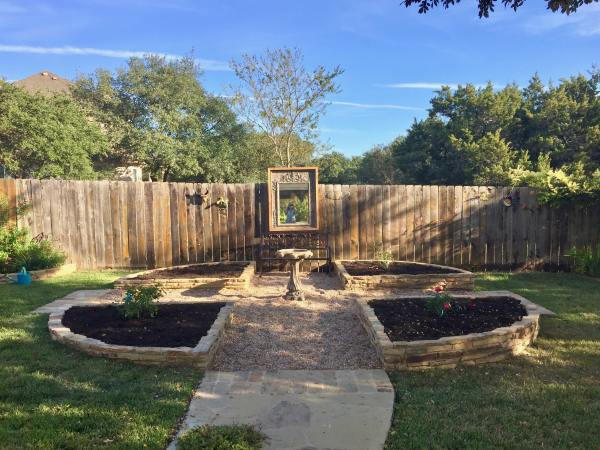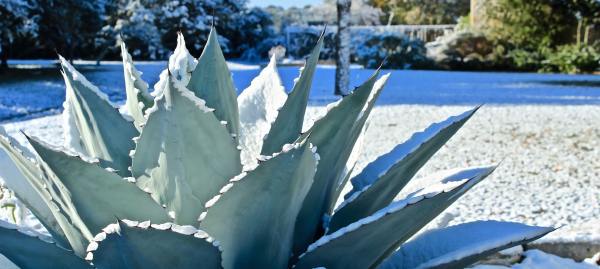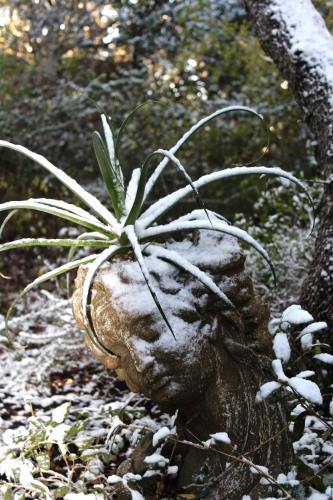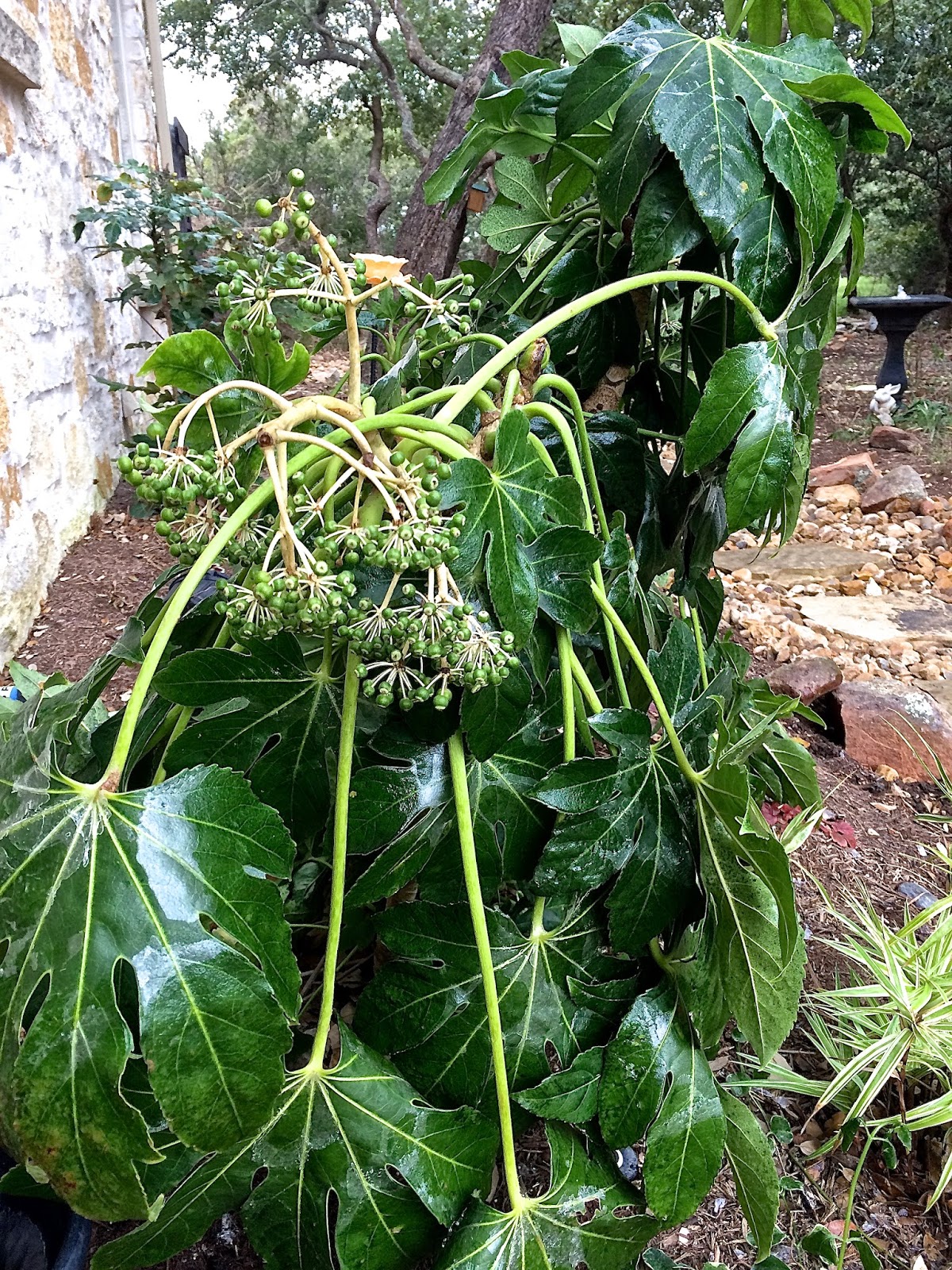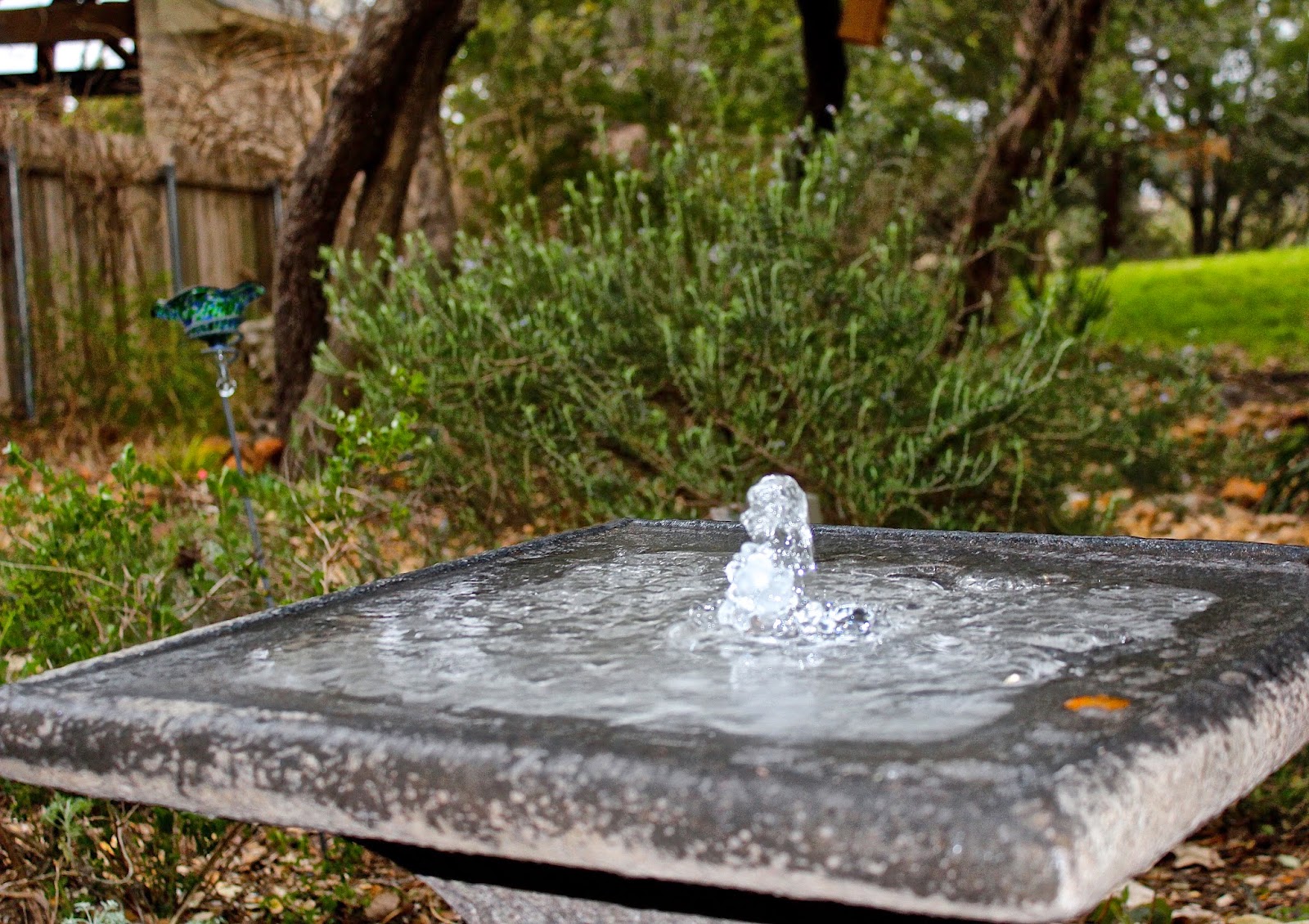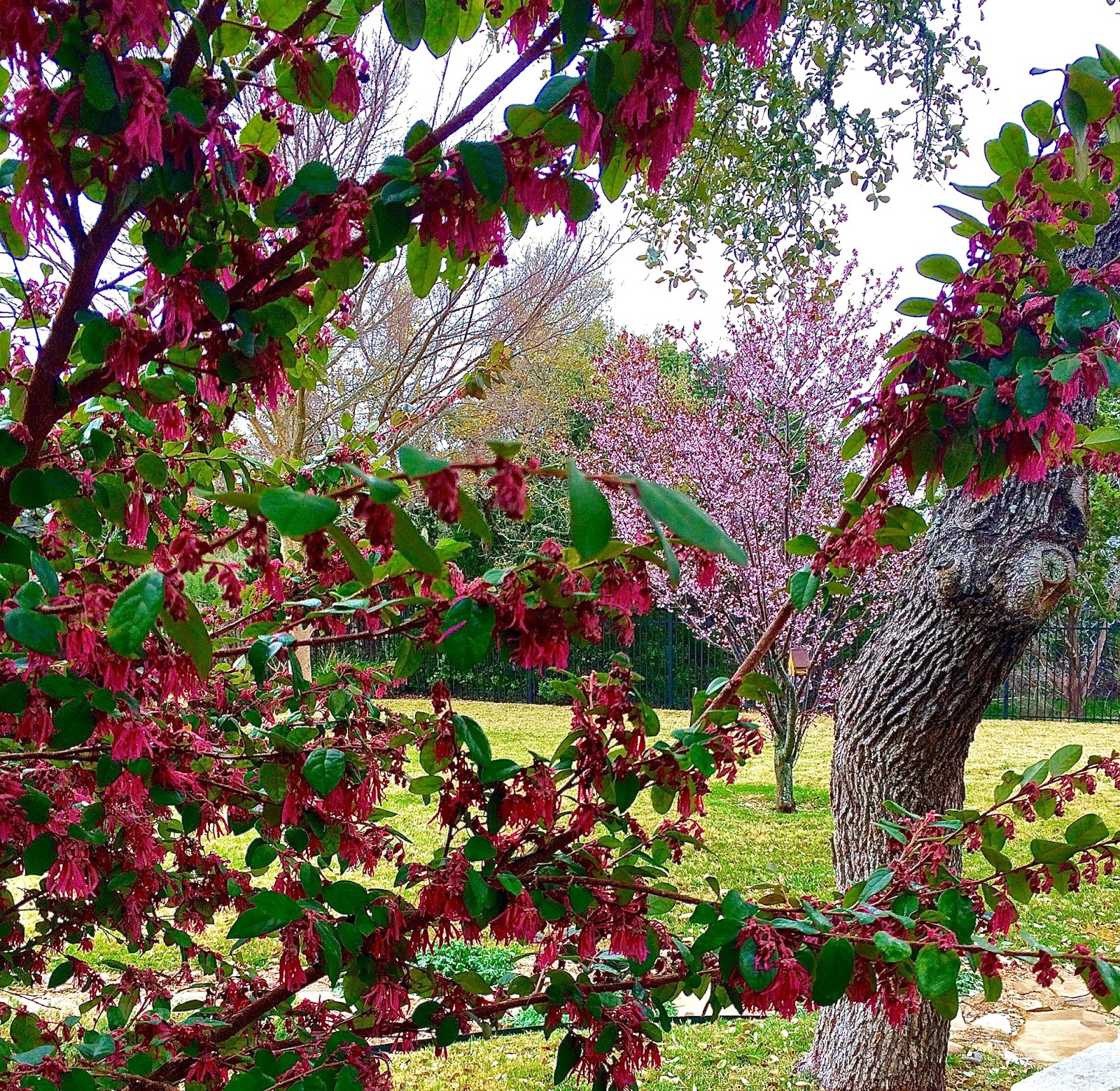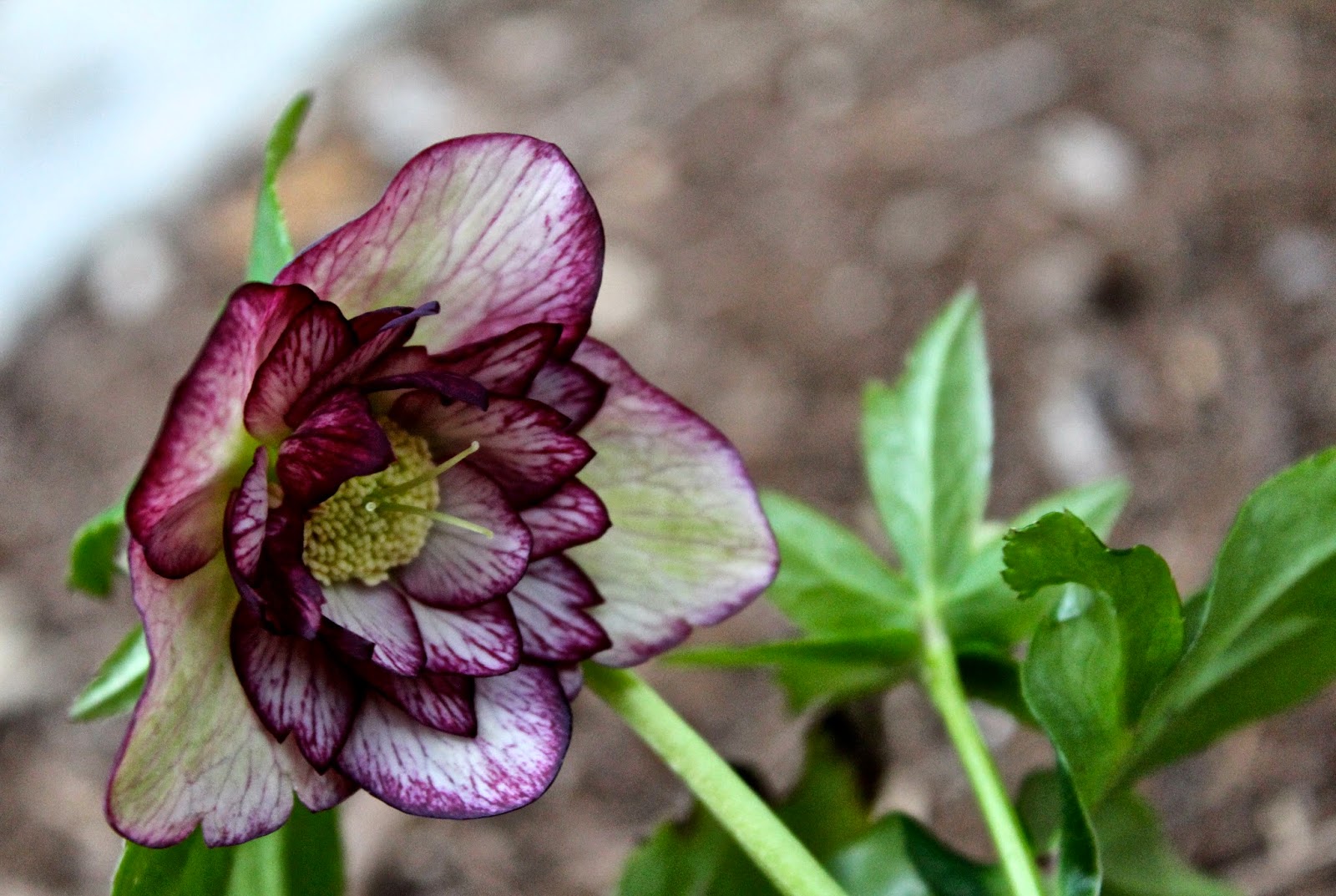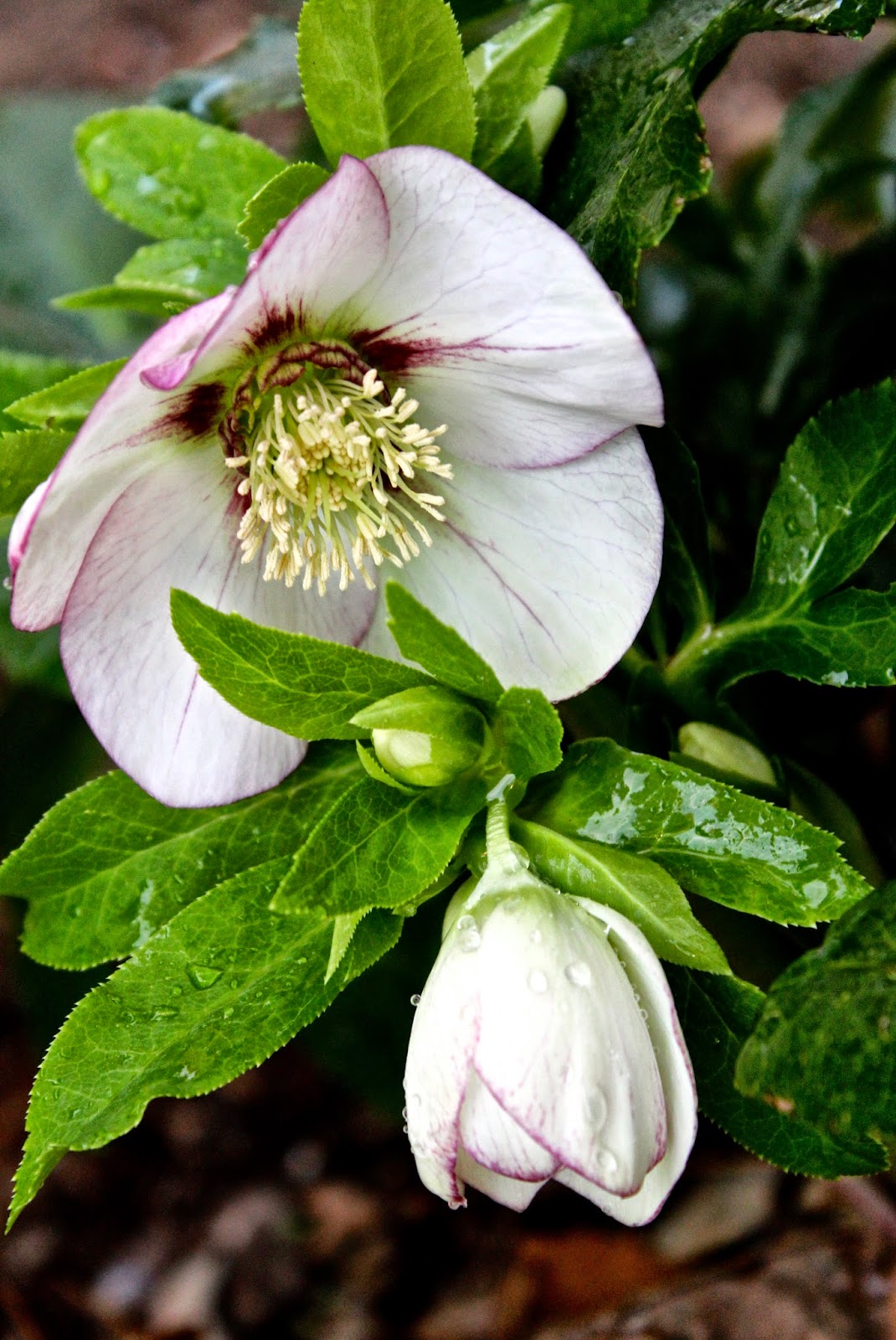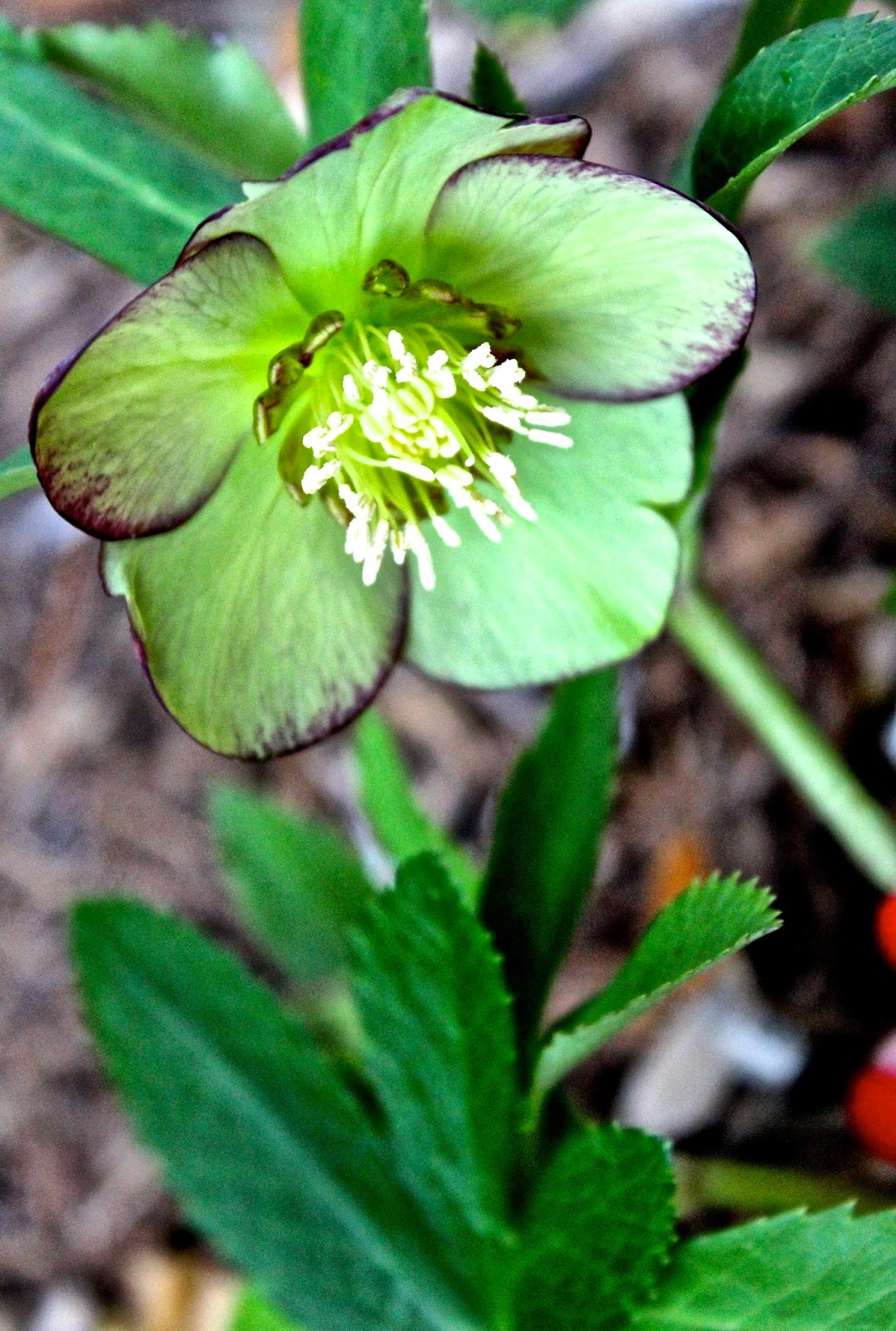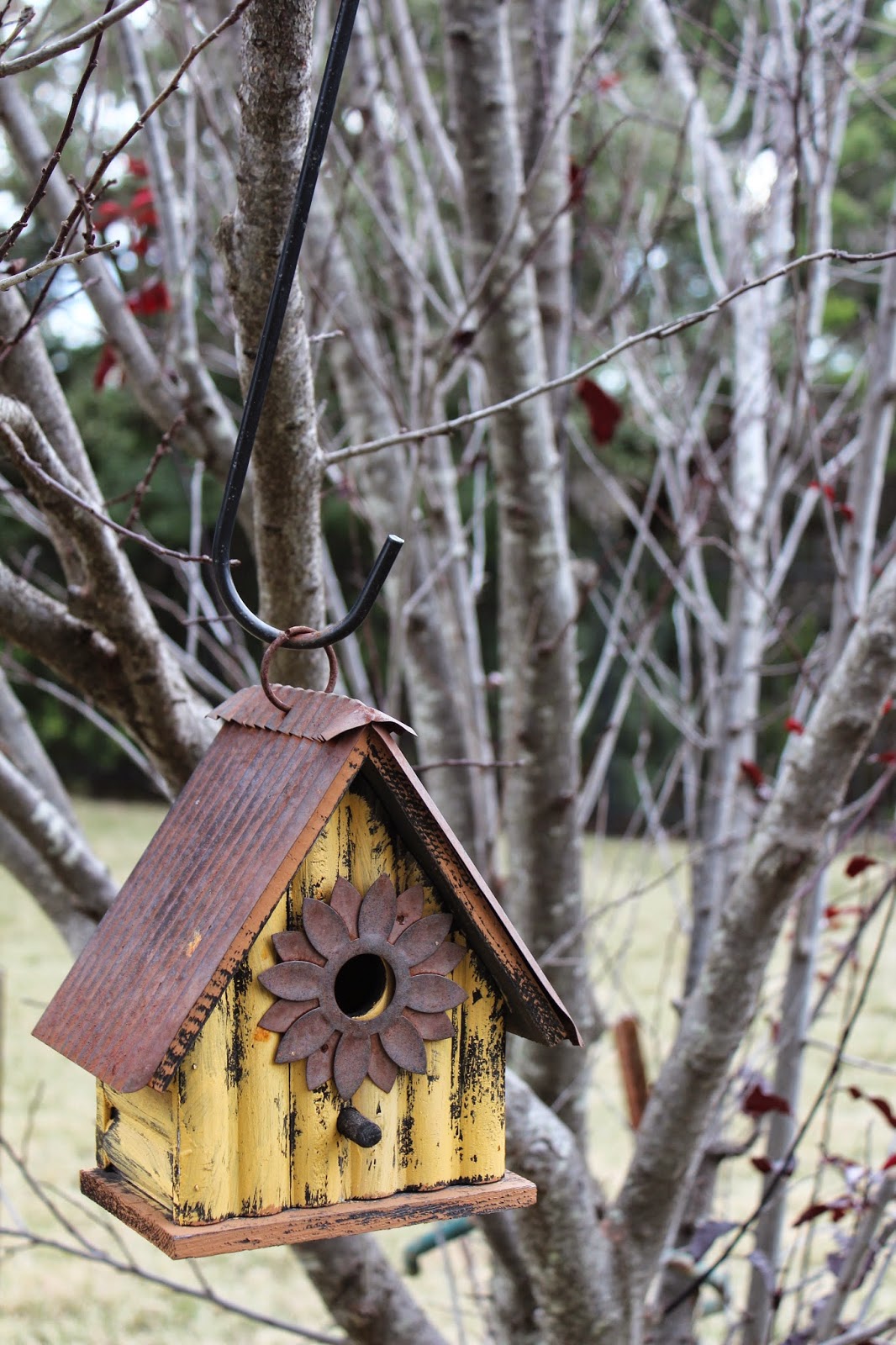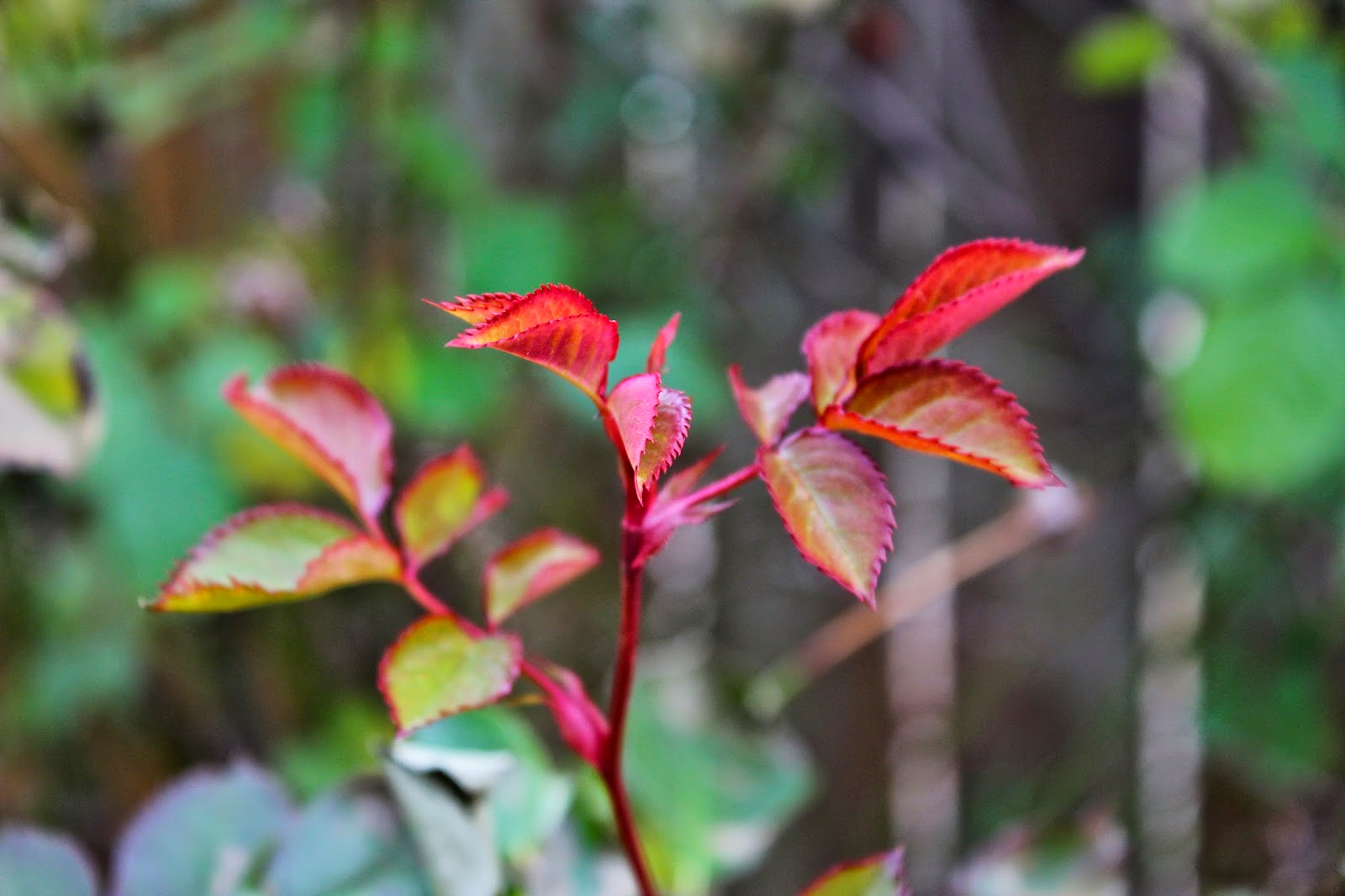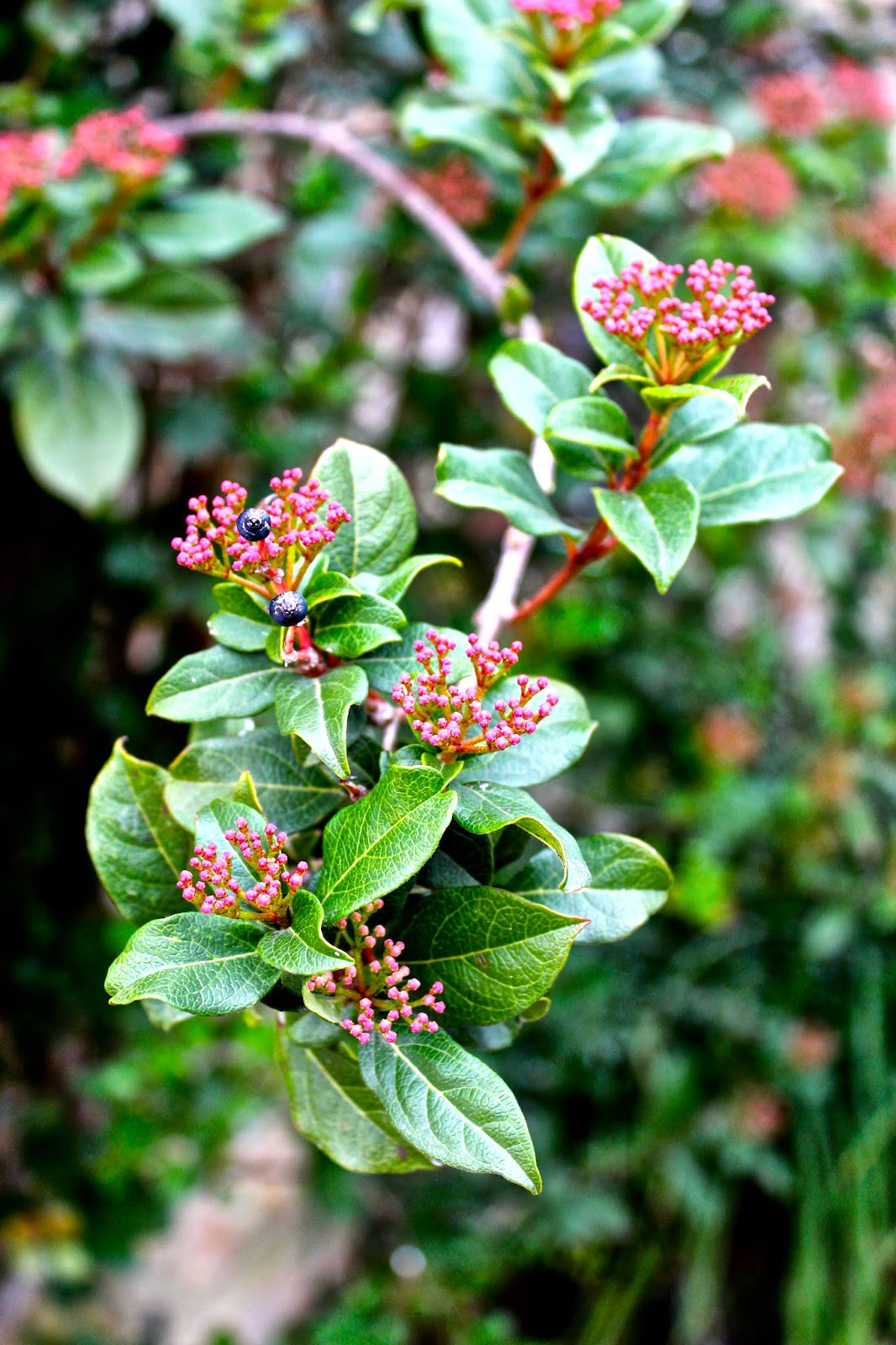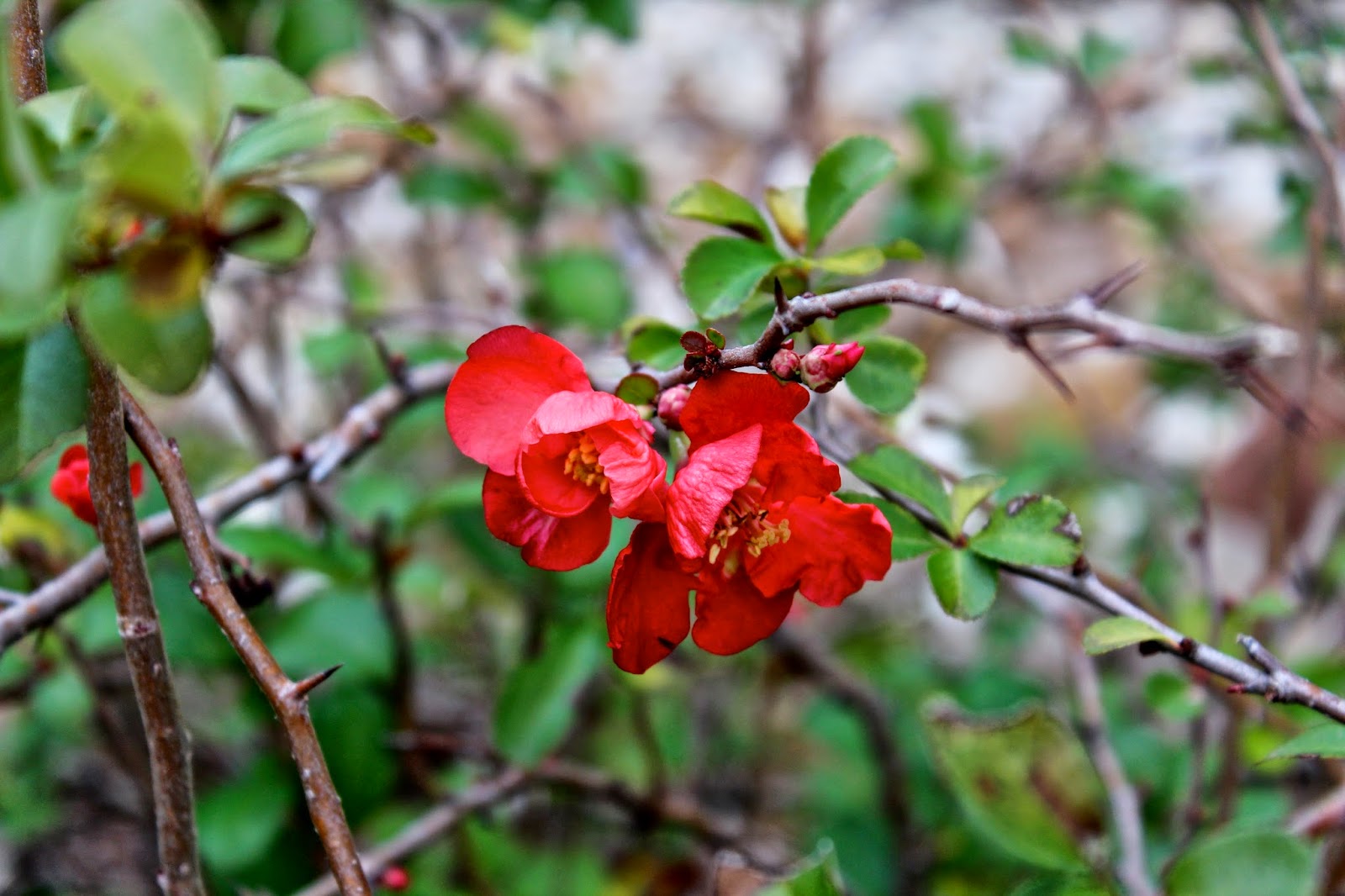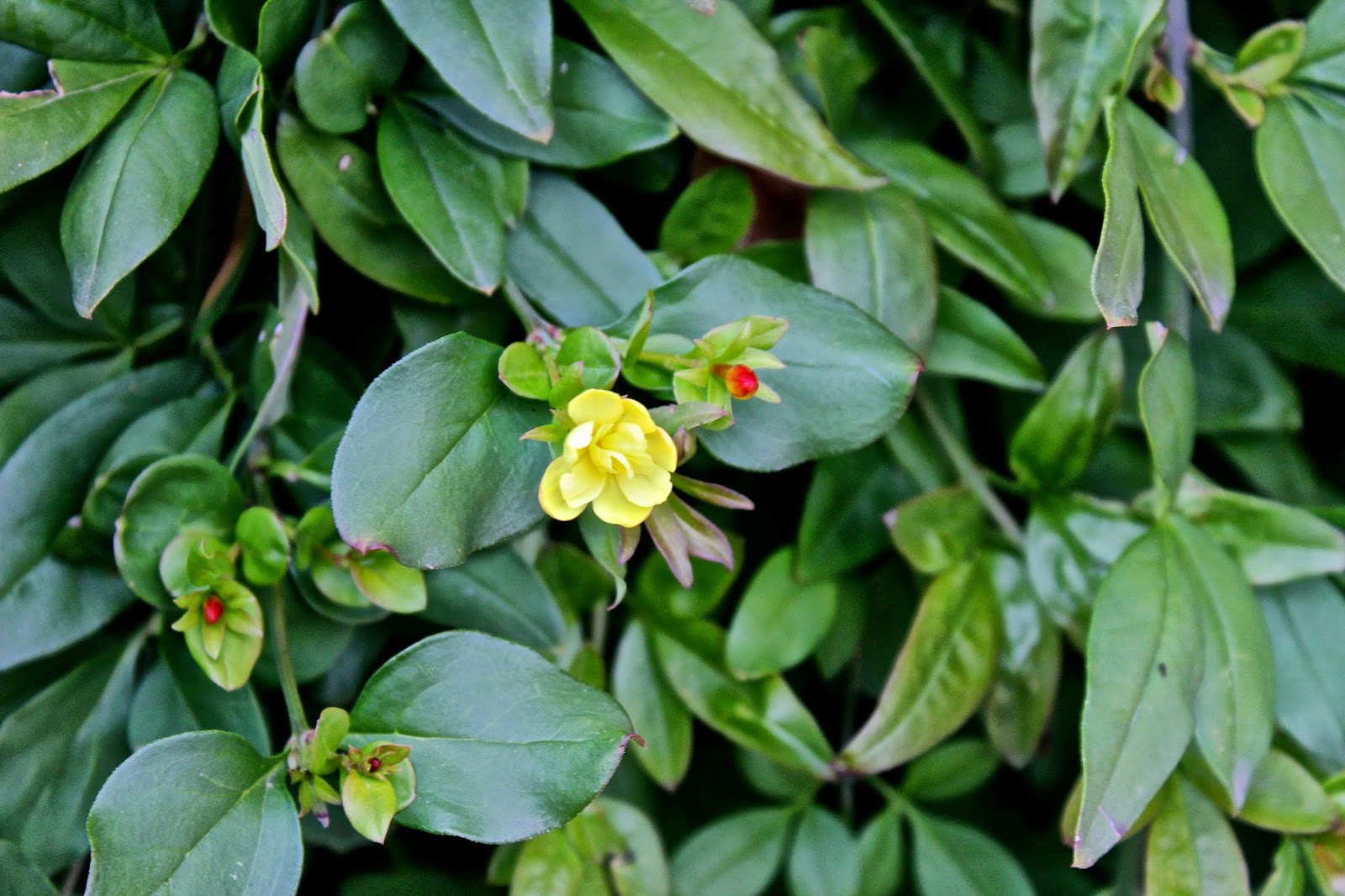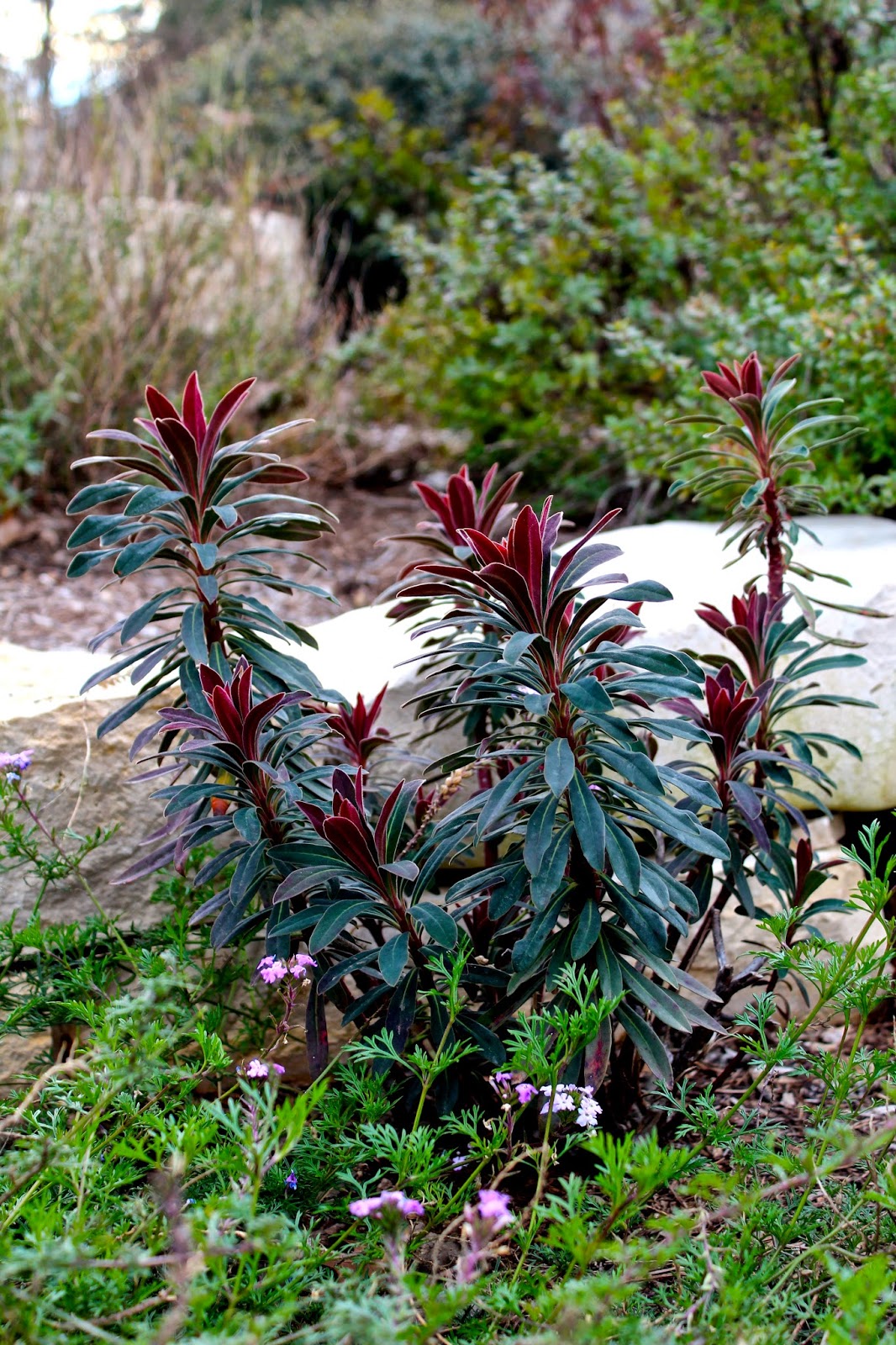Inspiration on a napkin turns ideas into reality in the new garden
I woke up at 5:15 Saturday morning, as excited to wake up and start the day as if it were Christmas morning. Saturday was planting day. I could hardly control myself as I tried to go back to sleep for at least a little longer.
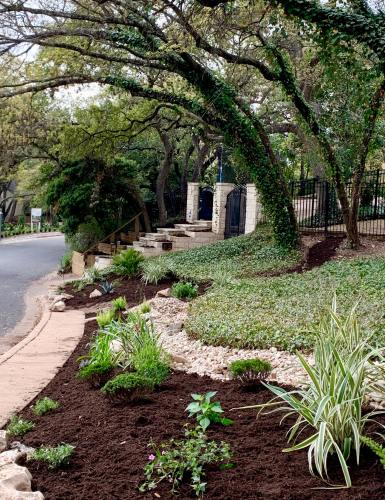
When we moved last summer, I knew I would have a blank landscape canvas with which to work. Now on a large, shaded and very hilly corner lot, the conditions in this garden are dramatically different than our previous garden.
I’m reminded of the adage, “be careful what you wish for…” and smile when I think of my complaints that the other landscape was flat and boring. There’s nothing flat here! In fact, the only thing here is ivy. Lots and lots of ivy. I’ve found Jasmine, English ivy, trumpet vine and Virginia creeper, all intermingled in an incestuous mess, threatening to eat the trees and the house and everything else in its path.
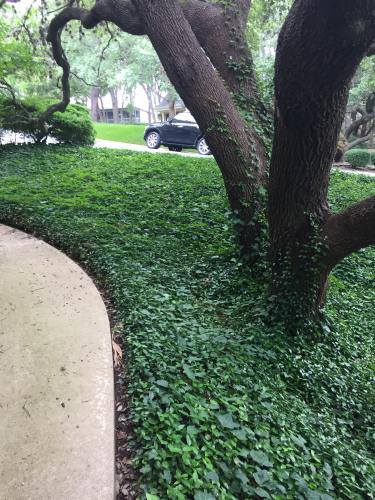
Over the last few months, I’ve tried to focus on the area that runs along the lower side of the property.
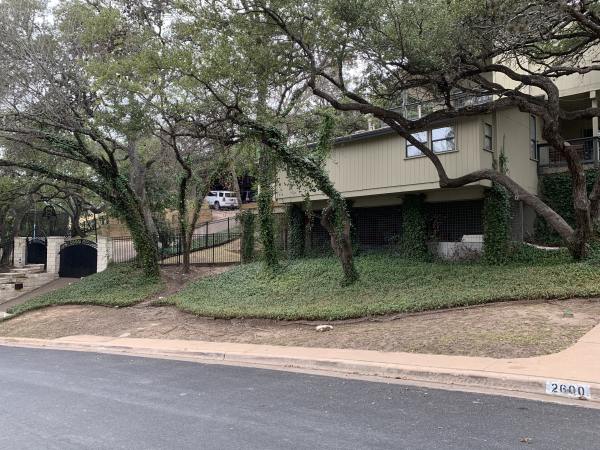
One of our first projects when we moved in was intensive pruning of the wonderful, yet long-neglected heritage trees. We removed a few dead ones, and opened up the canopy of trees along that side of the property. Because of the overgrown trees, all that remained in the total shade was dead grass, soil and exposed tree roots. Now, the afternoon sun shines in this area, and I decided that it might be my best bet at creating a bed friendly to sun-loving plants.
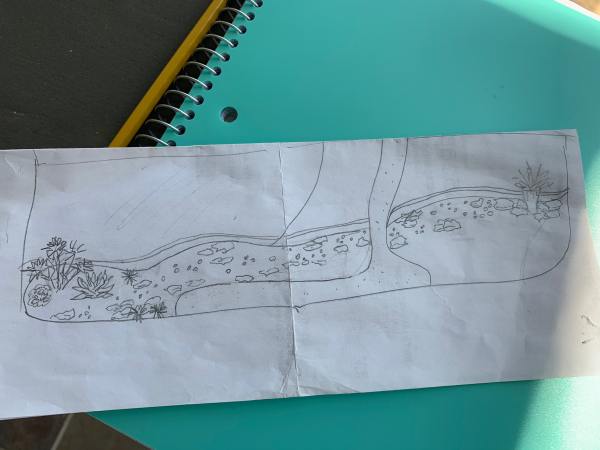 I’ve scribbled on several napkins and I’ve had a few snippets of ideas about possible plant combinations. Luckily, I came to my senses and decided to take the time to assess the space, allow my vision to evolve, and focus on some of my favorite plants. The sketch of plants grew as I decided to intersect the long space with a dry creek, boulders and a large ceramic pot as the focal point.
I’ve scribbled on several napkins and I’ve had a few snippets of ideas about possible plant combinations. Luckily, I came to my senses and decided to take the time to assess the space, allow my vision to evolve, and focus on some of my favorite plants. The sketch of plants grew as I decided to intersect the long space with a dry creek, boulders and a large ceramic pot as the focal point.
Last week, I put the plan into motion as I drew out the creek outline with construction paint and got the crew digging and delivering rock.
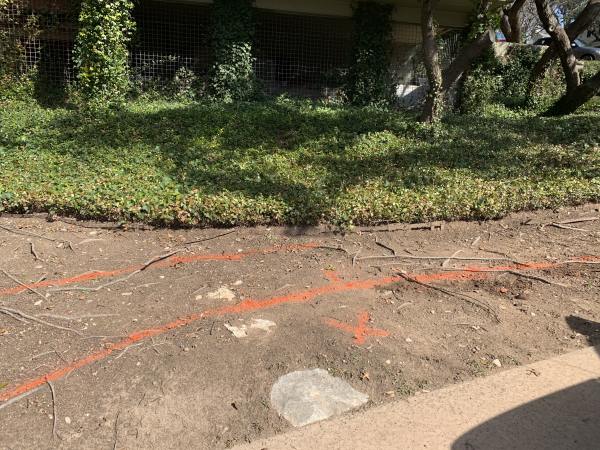
Over the week, I finalized my plant choices and placed my order. Saturday was the day.
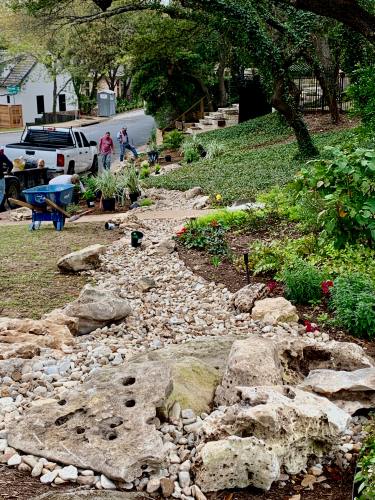
I lovingly placed every plant and every boulder, turning and adjusting and moving an inch to the left and then a half inch to the right and then another half inch back to the left!
At the top of the hill, I’ll add a very large ceramic pot, filled with a focal point plant and trailing potato vines or maybe silver pony foot. It will be nestled in the middle of these boulders at the headwaters of the creek.
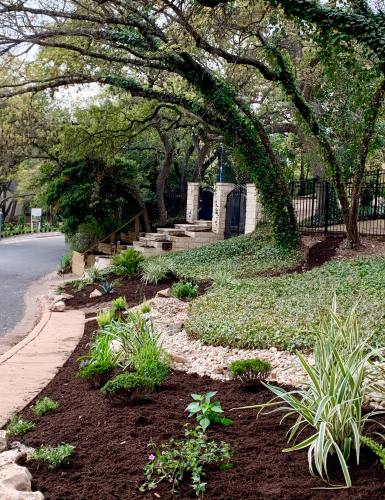
Bordering the sidewalk entrance, a few dianella, a purple trailing lantana, a red salvia Greggii, blackfoot daisies and damianita surround a regal purple Amistad salvia. She’ll be the star of the show in short order with her almost foot-long plumes.
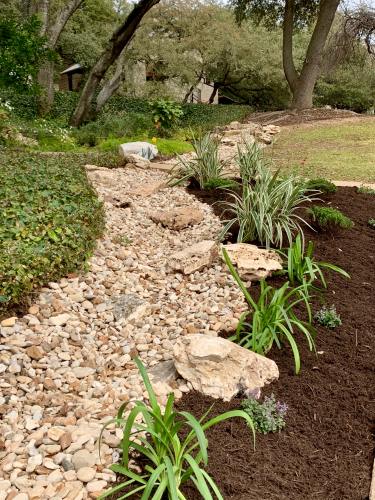 To create year-round interest, catmint is intermingled with the elegant and strappy leaves of Agapathus. I like the textural contrast between the delicate, gray-green catmint and the lime-y foliage of the agapanthus.
To create year-round interest, catmint is intermingled with the elegant and strappy leaves of Agapathus. I like the textural contrast between the delicate, gray-green catmint and the lime-y foliage of the agapanthus.
In mild winters like this one, catmint was evergreen in my previous garden.
It will be interesting to see how plants fare in this new garden.
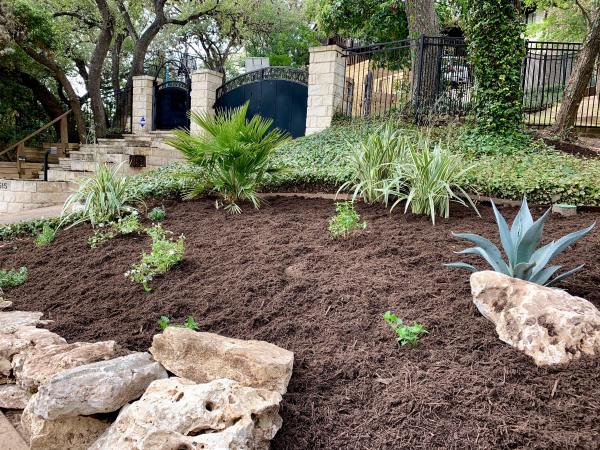 At the other end of the bed and the creek, the shining star will be a deep magenta Maggie rose (which I haven’t found yet). She’ll be flanked by Dianella, a Mediterranean fan palm, trailing white lantana, purple skullcap and a Weberi agave. Just past the Weberi, another Dianella keeps an Indigo spires salvia company along with an artichoke and a scattering of sculptural foxtail ferns.
At the other end of the bed and the creek, the shining star will be a deep magenta Maggie rose (which I haven’t found yet). She’ll be flanked by Dianella, a Mediterranean fan palm, trailing white lantana, purple skullcap and a Weberi agave. Just past the Weberi, another Dianella keeps an Indigo spires salvia company along with an artichoke and a scattering of sculptural foxtail ferns.
I didn’t realize how much I missed my other garden until I started to create a new one. It’s filled a void and I’m excited to be moving forward.
I have lots of other ideas swirling around in my head. And now that this bed is spiffy, neighboring areas definitely look shabby in comparison.
Now I’m dreaming about new stucco bed-bordering walls (to replace railroad ties), driveway flanking beds, and a possible new entrance from the street.
I’ve stocked up on napkins, there is plenty for me to do. I’ll keep you posted!

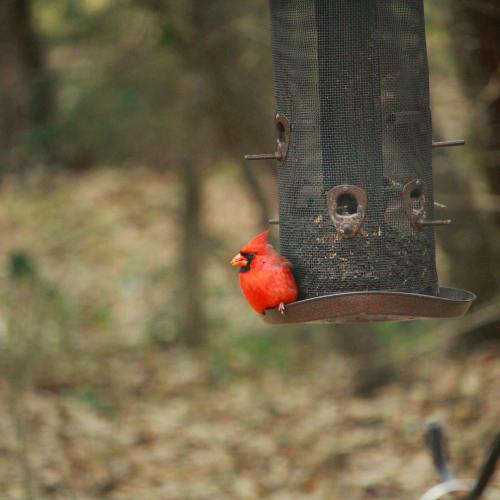
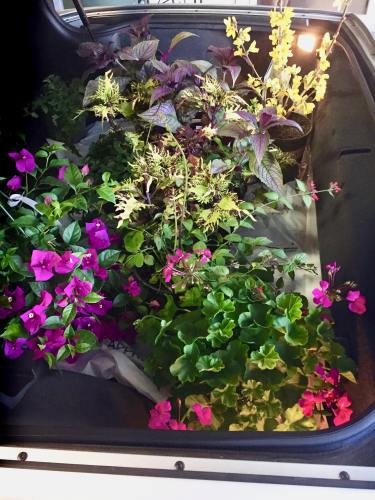
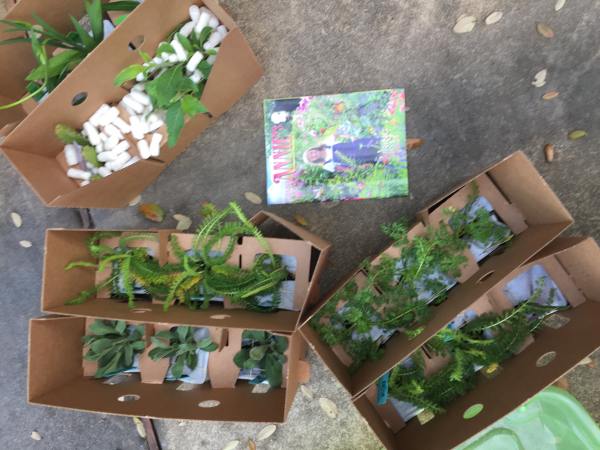
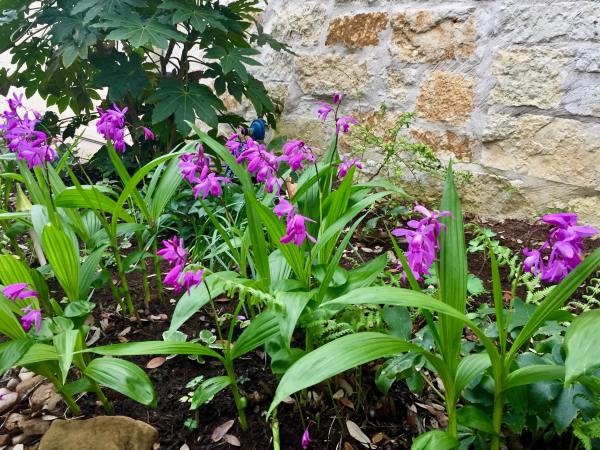
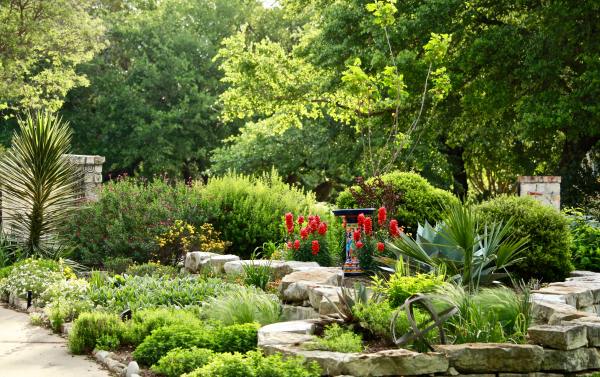
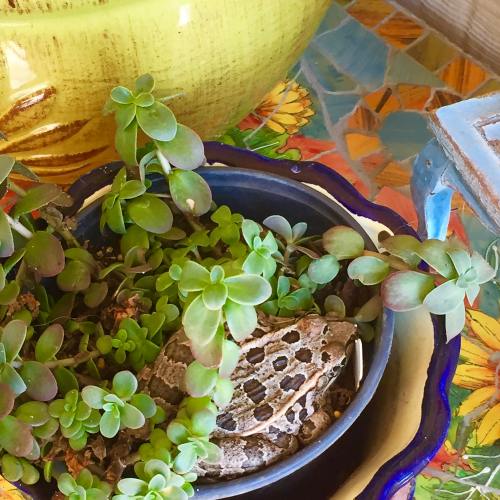
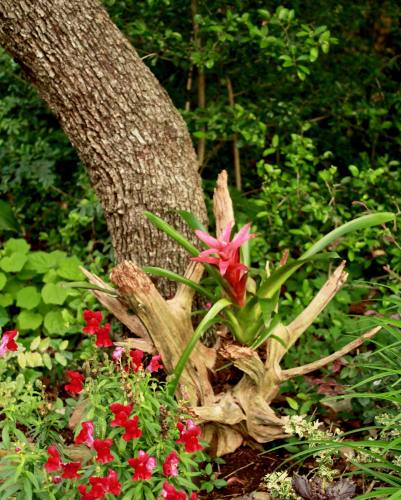
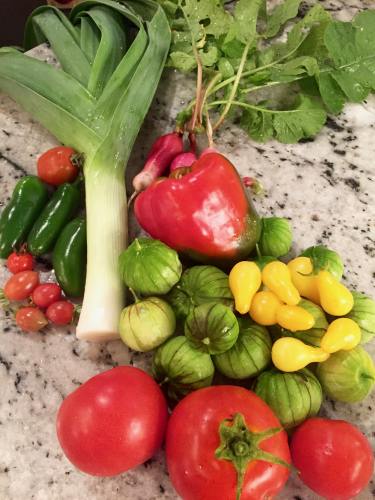 July: By now, the veggie garden provides us with an ongoing variety of great fruits and vegetables. Sadly, it is also the time for stink bugs and leaf-footed bugs to attack the tomatoes. Almost impossible to eliminate, I get depressed about the impending demise of my tomato crop. They multiply so quickly, it’s impossible to control them by hand squishing or spraying them with the hose.
July: By now, the veggie garden provides us with an ongoing variety of great fruits and vegetables. Sadly, it is also the time for stink bugs and leaf-footed bugs to attack the tomatoes. Almost impossible to eliminate, I get depressed about the impending demise of my tomato crop. They multiply so quickly, it’s impossible to control them by hand squishing or spraying them with the hose.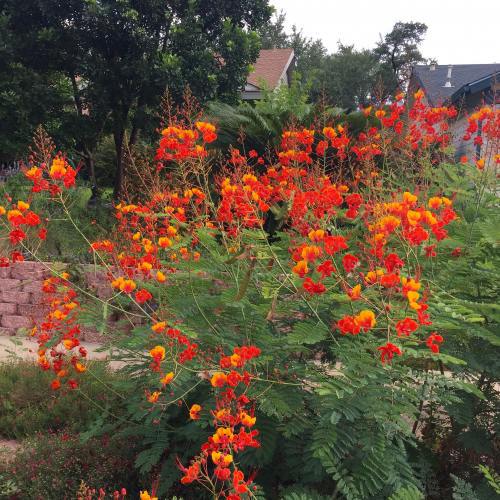
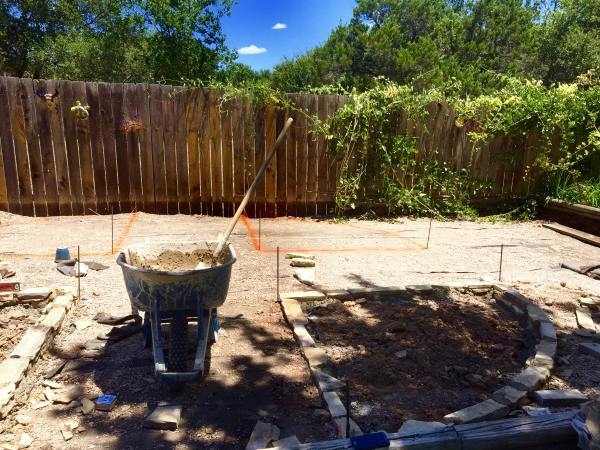
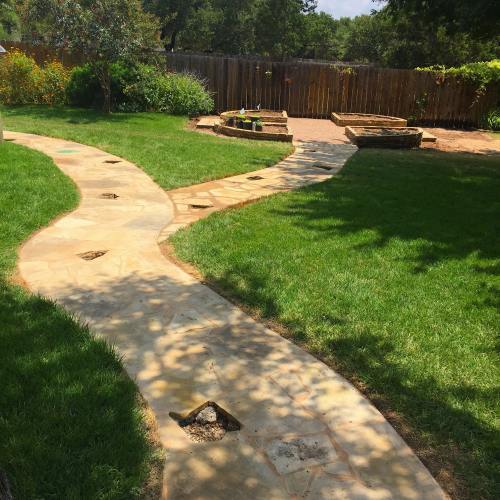
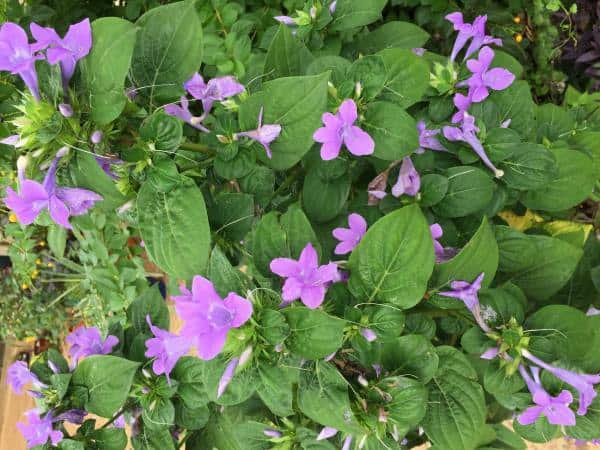 November: Fall also brought forth blooms from the newly planted Phillipine Violet, Barleria polytricha. My first experience growing this plant, it was awelcome addition to the tropical garden.
November: Fall also brought forth blooms from the newly planted Phillipine Violet, Barleria polytricha. My first experience growing this plant, it was awelcome addition to the tropical garden.